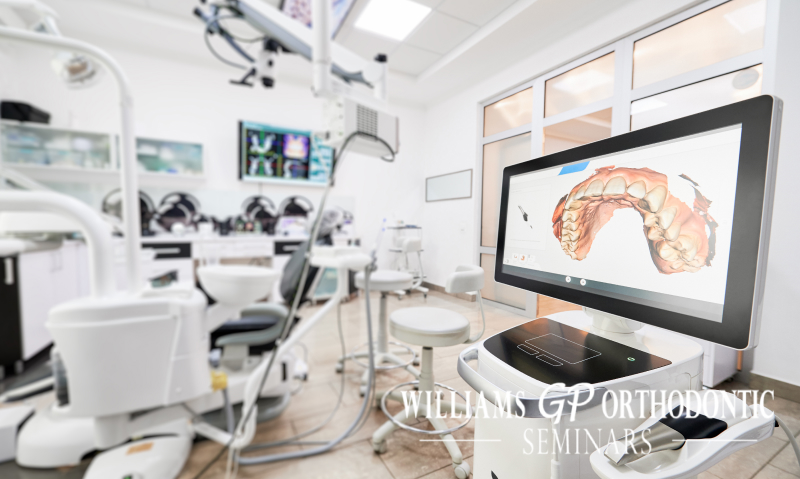Modern dental technology gives you the tools to perform modern dental care.
The dental industry is constantly evolving and improving thanks to advances in dental equipment and technology. This constant change not only improves the quality of patient care, but assists dental providers to be more productive throughout treatment. Dentists who practice orthodontics are no exception in needing advanced dental technology; in fact, it is a necessity to provide the highest level of care. Advanced dental technology is a major component and pillar of orthodontics because it allows for safer and more accurate diagnosis and treatment.
If you are a general dentist practicing orthodontics, here are some tips for implementing professional orthodontics using high-end technology.
4 Essential Technologies for GPs Practicing Orthodontics
1. Practice Management Software
All dentists need a reliable practice management software because it offers both clinical and administrative tools to efficiently run a dental practice. Practice management software creates a well-run office and allows dentists to perform several tasks including:
- Reviewing medical history.
- Recording and detailing treatment plans.
- Generating and integrating images.
- Reviewing treatment progress.
- Checking financial information.
- Sharing patient information with referral sources.
General dentists who practice orthodontics can opt for cloud-based software so that they can access information from anywhere, which increases productivity and efficiency.
2. Digital Dental X-Ray Machine
Every dental practice that offers orthodontics finds that digital X-ray technology is the best option for patients because it limits radiation exposure and provides clear and diagnostic radiography compared to older film technology. This is not to say that traditional x-rays don’t work. They do. But digital does provide optimal results.
Orthodontic providers use digital X-rays to help diagnose and manage patients’ care to ensure adequate bone levels, root tip development, and the overall health of teeth so that optimal results are achieved. Digital X-rays include intraoral radiographs like periapicals, occlusals, and bitewings. They can be shared with other dental specialists if you need to collaborate on multi-specialty cases, and are also good tools when pointing out diagnostic concerns to patients.
3. Pano and Ceph
For proper treatment planning, you’ll definitely need to take both panoramic and cephalometric images. This is critical to your initial evaluation and treatment planning as well as ongoing monitoring throughout treatment. And of course, these images are essential for keeping proper records.
4. Clinical Camera
Orthodontists rely on high-quality photographs for accurate diagnoses, measuring treatment progress, and educating patients. A clinical camera is also essential for proper record keeping. The accepted standard of care equipment for taking these orthodontic clinical photographs is a DSLR (digital single-lens reflex) camera. And intraoral camera is also an excellent addition, though not strictly necessary. So if your dental practice doesn’t already use a digital camera to document cases, now is the time to find the camera that best suits your needs.
3 More Useful Technologies for GPs Practicing Orthodontics
1. Orthodontic Treatment Planning Software
Software that helps with the treatment planning process, such as doing a lateral cephalometric analysis, is recommended because it is very efficient and produces professional-looking outputs for the dentist to use in communicating a proposed treatment plan with other providers and the patient. Planning software like Dolphin or Open Dental Software-Orthodontics is customizable to your dental practice and needs, but it’s always best to do your research before selecting a system. Also be sure to reach out to those in the field who have been doing this for a while; they will be able to give you first-hand knowledge about the pros and cons of the software they use.
2. 3D CT Scanner
A 3D CT scanner is a very convenient tool for dentists practicing orthodontics because it provides in-depth images that make skeletal structure and more easy to visualize. A 3D scanner is also handy for providing orthodontic treatment because it clearly depicts irregularities like cysts, bone loss, or cancer. Performing orthodontics with severe bone loss will only result in sub-optimal, sometimes even devastating, results.
3. 3D Printing
3D printing is the future of dentistry and orthodontics. Instead of relying on creating your own models from plaster or relying on laboratories for models and appliances, dental practices can now utilize advanced technology for scanning and printing digital models as well as appliances like clear, plastic retainers. This technology has a big impact on orthodontics because it increases efficiency and reduces costs while providing models for diagnosing and managing cases.
Unsure about the best tools and brands for you?
Prior to incorporating orthodontics into your practice, you need both knowledge and tools. And Dr. Brad, as a veteran orthodontics provider in his own practice as well as a renowned instructor and mentor to other dentists, is well prepared to help you get started with the best tools. His Basic Straight Wire Course offers long-term clinical and didactic education as well as introductions to reliable suppliers and ongoing support as you implement orthodontics in your own practice.

